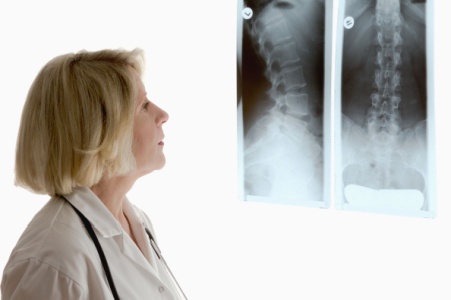
A herniated disc occurs when the soft inner material of a spinal disc pushes through a weakened area in its outer shell. A herniated disc most often affects adults between 35 and 55, making age a significant risk factor. Genetics can also play a role, as herniated discs sometimes run in families and may appear earlier in life. Jobs or sports that require heavy lifting, frequent bending, or twisting of the back increase the risk further. Herniated discs are most common in the lower back and neck, where nerve pressure can cause pain, numbness, or weakness in the limbs. A chiropractor can assess spinal alignment, perform gentle adjustments, and provide treatment to reduce nerve pressure and improve mobility. Imaging tests may be recommended if symptoms persist or worsen. If you are experiencing neck or back pain, it is suggested that you make an appointment with a chiropractor for relief.
Bulging and herniated discs are common spinal conditions that can lead to persistent pain, discomfort, and limited mobility. A disc bulge occurs when the outer layer of the spinal disc begins to protrude, while a herniated disc involves a rupture that allows the inner gel-like core to seep out. Both conditions often compress nearby nerves, resulting in pain, tingling, numbness, and muscle weakness that can affect the back, legs, and even arms.
From a chiropractic perspective, addressing disc bulges and herniations focuses on reducing pressure on the spinal nerves and restoring proper spinal alignment. Chiropractors employ gentle, targeted adjustments designed to alleviate nerve compression and improve spinal mechanics. By correcting misalignments, chiropractic care can help reduce inflammation, enhance blood flow, and promote natural healing processes. This holistic approach aims to relieve pain without invasive procedures or medication.
For many patients, complementary therapies like spinal decompression, therapeutic exercises, and lifestyle guidance support long-term relief and function. Chiropractic care offers a non-surgical, drug-free path to managing disc issues, focusing on enhancing overall spinal health and reducing the likelihood of recurring symptoms. Each treatment plan is tailored to the patient’s specific needs and goals, ensuring an effective, individualized approach.
1. Is chiropractic treatment safe for herniated discs?
Generally, chiropractic care is safe for herniated discs when performed by a licensed professional who assesses the condition carefully. Mild adjustments or specific techniques are often used to avoid further injury.
2. How long does it take to see improvement?
Improvement times vary, but many patients notice reduced pain and better mobility within a few weeks of consistent chiropractic care, depending on the disc’s severity and other factors.
If you have any questions please feel free to contact our office located in Tracy, CA .
